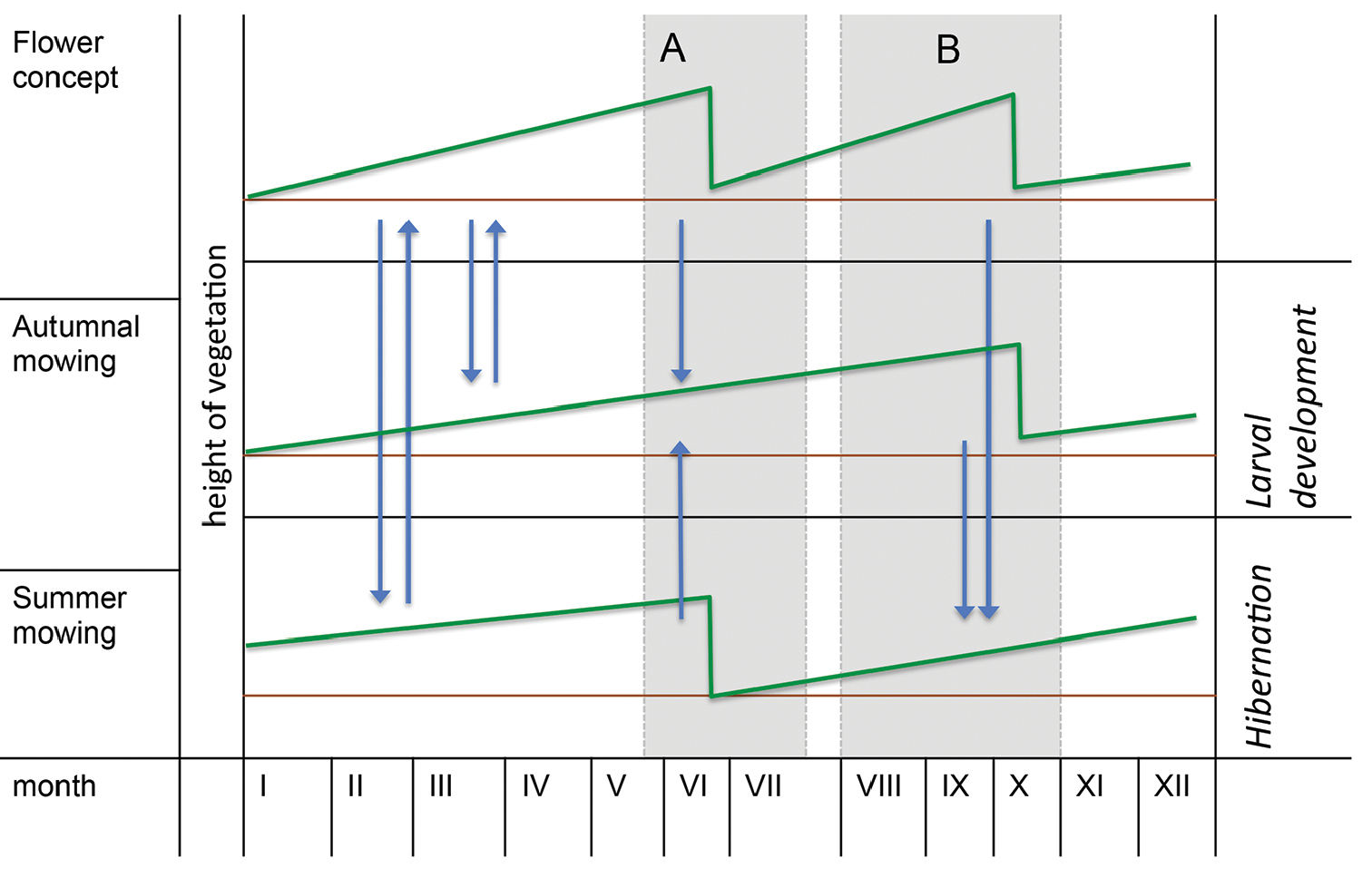
|
||
|
Scheme of an optimised management plan in consideration of the previous entomological studies and the present results. The authors distinguish between three mowing concepts, (1) the “flower concept” for optimising flower diversity and nutrient balance, (2) “autumnal mowing” for reproduction and larval development of late summer insects and (3) “summer mowing” for providing hibernation areas. The green line symbolises a possible course of vegetation height. A and B symbolise mowing periods rather than set mowing dates. The heights of mowing vary randomly (relation to constant (brown) soil baseline) to provide ecologically different situations (from open soil to longer vegetation as hiding places during mowing). The vegetation height of the “summer mowing” starts at a higher level in spring as a result of the vegetation that has remained on the site during winter. Blue arrows show the possible fluctuation between source and sink habitats and the metapopulations in the mosaic mowing system. In all three regimes, the disposal of the cut hay is recommended to avoid overfertilisation and grass dominance. |